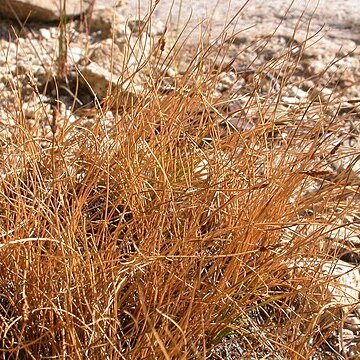Very densely tufted, (0.5–)1–3 dm; lvs wiry, involute, acicular, resembling the stems and nearly or fully as long, to 0.7 mm wide; spike 1, the upper half or two-thirds staminate; scales broadly obovate, apically rounded or broadly obtuse, or the lower sometimes cuspidate, the brown, scarious central part fading into the broad white-hyaline margins; pistillate scales equaling or a little longer than the ± concealed perigynia; perigynia 5–15, plump, obscurely trigonous and obscurely several-nerved, puberulent at least above, 3–4.5 mm including the 0.2–0.5 mm beak, filled by the trigonous achene; rachilla half to fully as long as the achene; 2n=50. Dry plains and hills; w. Minn. to Yukon, Wash., Tex., and N.M.

